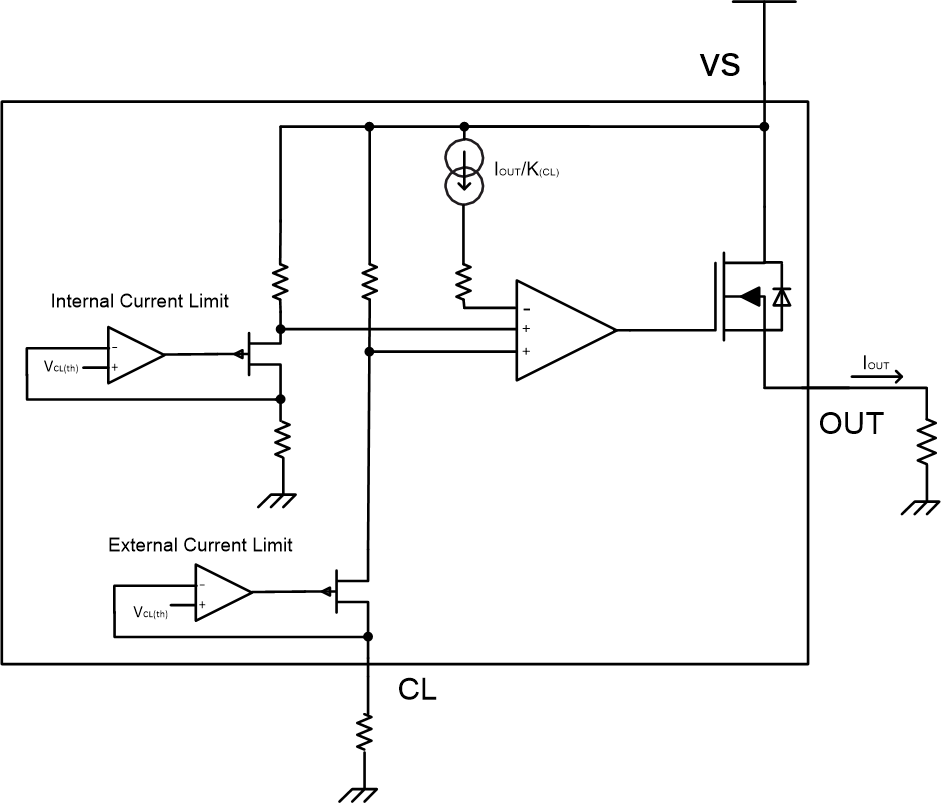ZHCSH03C August 2017 – June 2019 TPS1H000-Q1
PRODUCTION DATA.
- 1 特性
- 2 应用
- 3 说明
- 4 修订历史记录
- 5 Pin Configuration and Functions
- 6 Specifications
- 7 Detailed Description
- 8 Application and Implementation
- 9 Power Supply Recommendations
- 10Layout
- 11器件和文档支持
- 12机械、封装和可订购信息
7.3.1 Current Limit
A high-accuracy current limit allows high reliability of the design. It protects the load and the power supply from overstressing during short-circuit-to-GND or power-up conditions. The current limit can also save system cost by reducing the size of PCB traces and connectors, and the capacity of the preceding power stage.
When a current-limit threshold is reached, a closed loop activates immediately. The output current is clamped at the set value, and a fault is reported out. The device heats up due to the high power dissipation on the power FET.
The device has two current-limit thresholds.
- Internal current limit – The internal current limit is fixed at ICL(int). Tie the CL pin directly to the device GND for large-transient-current applications.
- External adjustable current limit – An external resistor is used to set the current-limit threshold. Use Equation 1 to calculate R(CL). VCL(th) is the internal band-gap voltage. K(CL) is the ratio of the output current and the current-limit set value. K(CL) is constant across temperature and supply voltage. The external adjustable current limit allows the flexibility to set the current-limit value by application.

Note that if using a GND network which causes a level shift between the device GND and board GND, the CL pin must be connected to the device GND.
For better protection from a hard short-to-GND condition (when the IN pin is enabled, a short to GND occurs suddenly), the device implements a fast-trip protection to turn off the output before the current-limit closed loop is set up. The fast-trip response time is less than 1 µs, typically. With this fast response, the device can achieve better inrush current-suppression performance.
 Figure 13. Current Limit
Figure 13. Current Limit